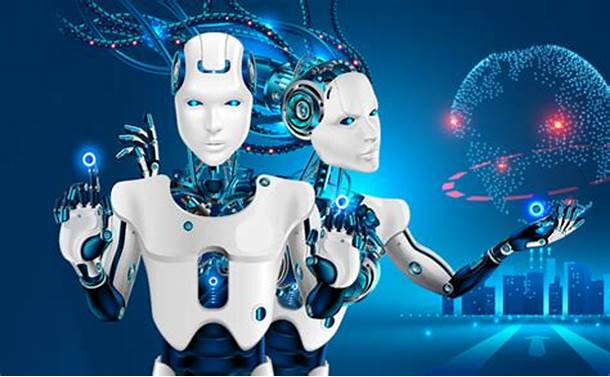Step into the realm of science fiction and prepare to be amazed as we witness the transformation of fantastic concepts into tangible realities. Throughout the history of cinema, we have been captivated by the imaginative creations brought to life on the silver screen. But what if I told you that some of those mind-boggling technologies showcased in movies are no longer confined to the realm of fiction? Yes, you heard it right! The line between science fiction and reality has been blurred as AI technologies have emerged from the depths of our imagination and become part of our everyday lives. In this article, we will explore six such AI technologies that have made the leap from science fiction to reality.

Robotics: Robots with human-like intelligence have been a popular theme in science fiction for decades. The dystopian world of "Blade Runner" presented us with humanoid robots known as replicants. While we may not have reached that level of sophistication, we have made tremendous progress in creating robots that closely resemble humans. Today, we are witnessing the rise of robots that can perform complex tasks with a level of sophistication that was once unimaginable. From industrial robots that work alongside humans in manufacturing plants to humanoid robots like Sophia that can converse, express emotions, and interact with people, AI has brought robotics into the realm of reality.
Virtual Reality (VR) and Augmented Reality (AR): The concept of immersing ourselves in virtual worlds or enhancing our real-world experiences with computer-generated elements has long been depicted in science fiction literature and movies. With advancements in AI, VR, and AR technologies have become accessible to the masses. Virtual reality headsets like Oculus Rift and HTC Vive transport users to virtual environments, while augmented reality applications like Pokémon Go overlay digital content onto the real world, changing the way we perceive and interact with our surroundings.
Predictive Analytics: Imagine having the power to predict future events and make informed decisions based on those predictions. Thanks to AI technologies like predictive analytics, this futuristic concept is now a reality. Predictive analytics uses machine learning algorithms to analyze large datasets and identify patterns that can be used to forecast future outcomes. This technology has found applications in finance, marketing, healthcare, and various other industries, enabling businesses and individuals to make data-driven decisions and gain a competitive edge.
Medical Diagnosis and Treatment: In science fiction, we often see sophisticated medical devices and AI-powered systems that can accurately diagnose and treat diseases. Today, AI is revolutionizing the healthcare industry by providing advanced diagnostic capabilities and personalized treatment options. Machine learning algorithms analyze medical data, including patient records, images, and genetic information, to assist doctors in diagnosing diseases, predicting treatment outcomes, and even discovering new drugs. AI is also being used in robotic surgery, making procedures more precise and reducing human error.
Natural Language Processing (NLP): Communicating with machines using natural language was once a concept reserved for science fiction. However, NLP has made this a reality. AI-powered chatbots and virtual assistants can understand and respond to human language, making interactions with technology more intuitive and conversational. NLP has applications in customer service, language translation, content generation, and many other areas where human-machine communication is essential.
Biometric Identification: Biometric identification, including fingerprint scanning, iris recognition, and DNA analysis, has long been a staple in science fiction movies depicting high-tech security systems. Today, biometric identification is widely used in real-world applications, from unlocking smartphones to enhancing airport security. AI algorithms analyse unique biometric features to accurately identify individuals, providing secure and convenient access control.
The progress of AI technologies has transformed science fiction into reality, with robotics, virtual reality, predictive analytics, medical advancements, natural language processing, and biometric identification becoming commonplace. As AI continues to evolve, we can expect even more once-fantastical concepts to become everyday realities. The future holds endless possibilities as AI technologies reshape our world, making science fiction dreams a tangible part of our lives.









